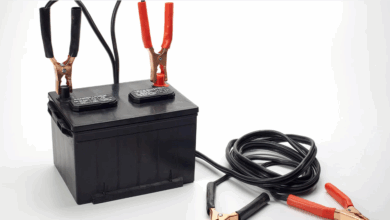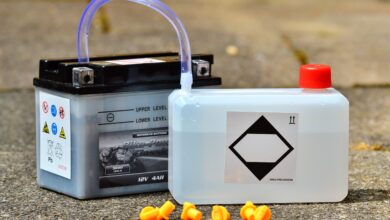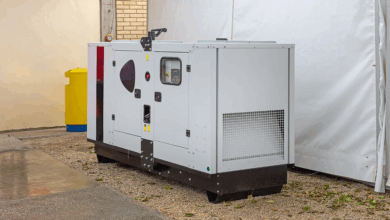The Camper’s Secret Weapon: Reliable Power in the Wilderness

The Camper’s Secret Weapon: Reliable Power in the Wilderness
The call of the wild is a siren song for many, promising escape, tranquility, and a disconnection from the constant hum of modern life. Yet, even the most dedicated minimalist camper often brings along a few essential pieces of technology: a smartphone for navigation and emergencies, a headlamp to pierce the darkness, maybe a camera to capture stunning vistas, or even a portable fan for those unexpectedly warm nights. What happens when these vital tools, designed to enhance safety and comfort, run out of juice miles from the nearest electrical outlet?
For generations, camping meant embracing a truly off-grid existence, where light came from fire or fuel lanterns, communication was impossible unless you walked out, and entertainment was strictly analog. While that raw experience still holds its appeal, the integration of technology has brought both convenience and a critical new need: reliable power. This isn’t just about checking social media; it’s about having a charged phone in case of emergency, ensuring your GPS device guides you safely back to the trail, keeping your headlamp bright when night falls, or even running essential medical devices.
Reliable power in the wilderness is no longer a luxury; it’s becoming the camper’s indispensable secret weapon. It’s the assurance that your critical gear will function when needed, transforming a potential predicament into a manageable situation and significantly enhancing both the safety and enjoyment of your outdoor adventure.
But how does one acquire this elusive power source far from the grid? The wilderness presents unique challenges: no wall outlets, potentially unpredictable weather, and the necessity for portable, durable solutions. Fortunately, technological advancements have provided campers with an arsenal of options, each with its own strengths, allowing adventurers to tailor their power solution to their specific needs and trip style.
The Arsenal of Reliable Power
The days of solely relying on spare batteries (though still important!) are over. Modern campers have access to a variety of sophisticated and effective power solutions:
-
Portable Power Stations: Arguably the most versatile and popular modern choice, these are essentially large, rechargeable battery packs equipped with a variety of output ports, including standard AC outlets, USB-A, USB-C, and 12V car ports. Think of them as silent, portable generators without the fumes or noise. They come in a vast range of sizes and capacities, from small units capable of charging phones and laptops multiple times to large ones that can run mini-fridges, lights, or even small appliances for extended periods.
- Pros: Clean energy, silent operation, multiple charging options, capacity for higher power devices, relatively easy to use.
- Cons: Can be heavy and bulky depending on capacity, require recharging before the trip (though many can be recharged via solar).
-
Solar Panels: A fantastic renewable option, solar panels convert sunlight directly into electricity. Portable versions are available in various forms, from small foldable panels that can charge a phone directly or top up a power bank, to larger rigid or flexible panels suitable for charging larger power stations or vehicle batteries. They are ideal for longer trips where you have reliable sun exposure to replenish your power supply daily.
- Pros: Renewable and free energy source (once purchased), environmentally friendly, silent operation, great for extended off-grid stays.
- Cons: Dependent on sunlight (weather and time of day), charging can be slow, efficiency varies based on panel size and quality, requires proper positioning.
-
Portable Generators: The traditional heavy hitters, portable generators use gasoline, propane, or diesel fuel to produce electricity. While often associated with RVs or car camping due to their size, weight, and noise, they provide significant power output, capable of running larger appliances. Newer inverter generators are quieter and more fuel-efficient than older models, offering a more refined option for campers with higher power demands.
- Pros: High power output, can run power-hungry devices, not dependent on sun or pre-charging (as long as you have fuel).
- Cons: Noisy, produce fumes, require fuel storage, heavier and bulkier than battery solutions, require maintenance, not suitable for noise-sensitive areas or backpacking.
-
Small Power Banks: The ubiquitous, pocket-sized lifesavers. These compact battery packs are perfect for keeping personal devices like phones, headlamps, or e-readers charged. They are lightweight, affordable, and essential for any outdoor trip, serving as a first line of defense against dead batteries.
- Pros: Highly portable, lightweight, affordable, simple to use, perfect for charging small devices.
- Cons: Limited capacity, cannot power larger devices or appliances.
- Vehicle Power (DC/Inverters): If you’re car camping or overlanding, your vehicle’s electrical system can be a power source. A simple cigarette lighter adapter (DC port) is sufficient for charging phones or small electronics. For AC power, you can use a power inverter connected to your vehicle’s battery or cigarette lighter socket. This allows you to use standard household plugs, but be mindful of draining your car battery if the engine isn’t running.
- Pros: Utilizes existing resource (your vehicle), convenient when driving, relatively inexpensive for basic charging.
- Cons: Can drain car battery quickly if engine is off, limited power output depending on the inverter, only available when near your vehicle.
Choosing Your Secret Weapon
Selecting the right power solution depends entirely on your specific needs and camping style:
- For Backpackers: Lightweight is paramount. A combination of a small power bank and perhaps a compact foldable solar panel is usually sufficient for keeping essential navigation tools (phone with downloaded maps, GPS) and headlamps charged.
- For Weekend Car Campers: A mid-size portable power station is often ideal. It can charge phones, run camp lights, maybe a small fan, and potentially even an electric air pump for an air mattress. Solar can supplement this if desired.
- For RVers or Long-Term Campers: A larger power station, potentially integrated with a significant solar setup, or a portable generator might be necessary to run appliances, climate control, or more complex electronics.
- Consider Duration: A short overnight trip requires far less power than a week-long off-grid adventure.
- List Your Devices: Tally up everything you plan to charge or power and check their wattage requirements. This helps determine the necessary capacity and output type.
- Weight and Portability: Are you hiking miles in, or driving up to your site? This heavily influences how much weight you’re willing to carry.
- Budget: Power solutions range significantly in price.
Maximizing Your Power Potential
Simply having a power source isn’t enough; knowing how to use it efficiently is key. Conserve battery life on your devices whenever possible – turn off non-essential apps, dim screens, use power-saving modes. Position solar panels for maximum sun exposure throughout the day. For generators, be mindful of run times and fuel consumption.
The Transformation
Having reliable power fundamentally changes the wilderness experience for the better. It provides a crucial safety net, ensuring you can call for help, navigate effectively, and signal your location if needed. It enhances comfort, providing light for cooking and socializing after dark, keeping devices charged for entertainment or information, and enabling small luxuries like a fan or charged camera batteries. It allows you to stay off-grid for longer periods with confidence, delving deeper into nature without feeling tethered to the nearest outlet.
Conclusion
In the age where technology intertwines with even the most rustic pursuits, reliable power has emerged as the modern camper’s essential secret weapon. It bridges the gap between embracing the wild and maintaining the critical functions and safety features that technology provides. Whether it’s the silent energy of a portable power station, the sustainable trickle of solar, or the robust output of a generator, choosing and understanding your power source transforms potential vulnerability into assured capability. So, as you pack your gear for your next adventure, remember to bring along this indispensable tool – because in the wilderness, reliable power is not just a convenience; it’s empowerment.
FAQs
- Q1: How long will a portable power station last in the wilderness?
- A1: It depends entirely on the station’s capacity (measured in Watt-hours or milliamp-hours) and what devices you are powering. Running a phone charger uses much less power than running a small fridge. Check the power draw of your devices and the capacity of the station to estimate runtime.
- Q2: Are portable solar panels enough to keep my devices charged?
- A2: It depends on the panel’s wattage, the amount of direct sunlight you get, and the power needs of your devices. Small panels can slowly charge phones or power banks. Larger panels are needed to effectively charge bigger power stations or multiple devices. They often work best as a way to supplement a battery source rather than being the sole provider.
- Q3: Can I use a portable power station or generator to run a camping coffee maker or electric kettle?
- A3: You might be able to, but you must check the wattage requirement of the appliance and ensure your power station or generator can handle that continuous load. Coffee makers and kettles often draw significant power, so only larger units will be suitable.
- Q4: Is it safe to use portable power banks and stations in different weather conditions?
- A4: Most modern power banks and stations are designed for outdoor use, but it’s crucial to check their IP rating (Ingress Protection) for resistance to dust and water. Avoid direct exposure to heavy rain or submersion unless specifically rated for it. Extreme temperatures can also affect battery performance. Always follow the manufacturer’s guidelines.




![How to Bypass CO Sensor on Generator – [4-Step Safety Guide]](https://www.generator411.com/wp-content/uploads/2025/08/co-sensor-on-generator-390x220.png)